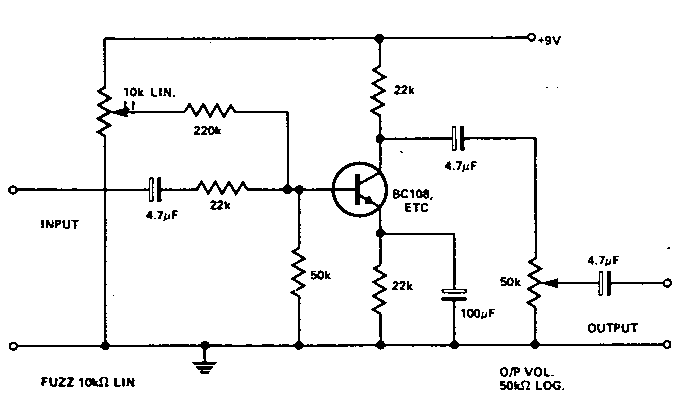FUZZ
BOX FOR ELECTRIC GUITARS
This circuit has been
well tried by many musicians and
has proved very successful.
Q1 and
Q2 form a voltage amplifier
which has sufficient gain
to be ‘overdriven’ by a relatively low input, such as an electric guitar.
The result is that the
output from Q2 is a ‘Squared-Off’ version of the input, giving the required
fuzz sound.
RV1 adjusts the amount of negative
feedback inserted into the circuit
by C2, and thus the amount of squaring of the signal. The purpose of R3
and R4 is to lower the output voltage to a suitable level, which is then
adjusted as required with the volume control VR2.


